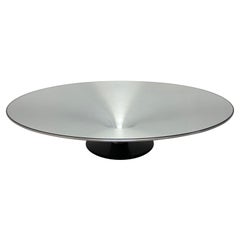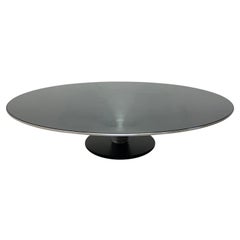Vincenzo Maiolino
Recent Sales
21st Century and Contemporary French Modern Coffee and Cocktail Tables
Aluminum, Steel
21st Century and Contemporary French Modern Coffee and Cocktail Tables
Aluminum, Steel
21st Century and Contemporary French Modern Coffee and Cocktail Tables
Aluminum, Steel
Early 20th Century French Modern Coffee and Cocktail Tables
Aluminum, Steel
21st Century and Contemporary French Post-Modern Coffee and Cocktail Tables
Aluminum
21st Century and Contemporary French Post-Modern Coffee and Cocktail Tables
Aluminum
21st Century and Contemporary French Post-Modern Coffee and Cocktail Tables
Aluminum
Roche Bobois for sale on 1stDibs
In 1974, Roche Bobois opened its first showroom in the United States on Madison Avenue in New York City. The celebrated luxury French furniture brand is now in 50 countries with more than 200 stores.
The Roche Bobois story has origins in 1950, when entrepreneur Jacques Roche converted an old Paris theater into two contemporary furniture boutiques so that his sons could help usher stunning Bauhaus-inspired work out of the shops and into French homes nearby.
At another showroom called Au Beau Bois, also in the French capital city, the Chouchan family was simultaneously selling home furnishings. The families met later, when Philippe and François Roche convened with Patrick and Jean-Claude Chouchan at a furniture exhibition in Copenhagen in 1960 and afterward produced a catalog announcing their partnership.
Minimal and modernist Scandinavian design had gained prominence in the furniture industry by 1960, rendering designers such as Kaare Klint and Poul Henningsen marquee names — and Roche Bobois's principals had taken notice. Following a national advertising campaign in Elle magazine a year later, the Scandinavian furniture that the newly minted Roche Bobois was importing to Paris became a huge success. Early promotional material from the firm likely included the sleek modular wall units crafted in rosewood by Danish furniture maker Poul Cadovius. It didn’t take long for Roche Bobois to shift toward producing its own contemporary furniture line.
When the popularity of cable television took hold in more major American cities during the 1970s, sofas and other seating became integral to contemporary living-room decor. Roche Bobois’s newly launched Les Contemporains series positioned its own sofas front and center, and it also offered plush lounge chairs designed by Mario Bellini.
Bold works from the company during the decade included Marc Berthier’s Pop Art–colored tubular metal desks and chairs — the latter covered with braided fabric — as well as one of Roche Bobois’s most enduring and well-known pieces, the Mah Jong sectional sofa created by sculptor, painter and designer Hans Hopfer. Anchored by few central elements, this modular lounge sofa can be combined or stacked, giving the buyer total freedom over its appearance and the ability to maximize comfort.
Since its inception, Roche Bobois has worked with many internationally renowned architects and designers on its collections, among them Paola Navone and Vladimir Kagan. Even fashion designers such as Missoni and Emanuel Ungaro have made contributions to the company’s lineup.
In 2010, Roche Bobois marked its 50-year anniversary by debuting a partnership with French fashion designer Jean Paul Gaultier. A decade later, Roche Bobois teamed up with Portuguese artist Joana Vasconcelos, who designed a collection of organically shaped sofas as well as vibrant, colorful accent pillows and rugs.
Roche Bobois’s offerings over the years have included everything from mid-century modern armchairs to Art Deco case pieces to sculptural outdoor cocktail tables framed in metal wire — shop these classics now on 1stDibs.
Finding the Right Coffee-tables-cocktail-tables for You
As a practical focal point in your living area, antique and vintage coffee tables and cocktail tables are an invaluable addition to any interior.
Low tables that were initially used as tea tables or coffee tables have been around since at least the mid- to late-1800s. Early coffee tables surfaced in Victorian-era England, likely influenced by the use of tea tables in Japanese tea gardens. In the United States, furniture makers worked to introduce low, long tables into their offerings as the popularity of coffee and “coffee breaks” took hold during the late 19th century and early 20th century.
It didn’t take long for coffee tables and cocktail tables to become a design staple and for consumers to recognize their role in entertaining no matter what beverages were being served. Originally, these tables were as simple as they are practical — as high as your sofa and made primarily of wood. In recent years, however, metal, glass and plastics have become popular in coffee tables and cocktail tables, and design hasn’t been restricted to the conventional low profile, either.
Visionary craftspeople such as Paul Evans introduced bold, geometric designs that challenge the traditional idea of what a coffee table can be. The elongated rectangles and wide boxy forms of Evans’s desirable Cityscape coffee table, for example, will meet your needs but undoubtedly prove imposing in your living space.
If you’re shopping for an older coffee table to bring into your home — be it an antique Georgian-style coffee table made of mahogany or walnut with decorative inlays or a classic square mid-century modern piece comprised of rosewood designed by the likes of Ettore Sottsass — there are a few things you should keep in mind.
Both the table itself and what you put on it should align with the overall design of the room, not just by what you think looks fashionable in isolation. According to interior designer Tamara Eaton, the material of your vintage coffee table is something you need to consider. “With a glass coffee table, you also have to think about the surface underneath, like the rug or floor,” she says. “With wood and stone tables, you think about what’s on top.”
Find the perfect centerpiece for any room, no matter what your personal furniture style on 1stDibs — shop Art Deco coffee tables, travertine coffee tables and other antique and vintage coffee tables and cocktail tables today.
- 1stDibs ExpertMarch 22, 2022Roche Bobois makes furniture in several different locations. Most pieces come from factories located in Italy, France and Portugal, but the brand does occasionally work with manufacturers in other Western European countries. You'll find a selection of Roche Bobois furniture on 1stDibs.
- Who owns Roche Bobois?1 Answer1stDibs ExpertMarch 22, 2022No individual person or corporation owns Roche Bobois. The company is public and traded on the Euronext Paris exchange under the initials RBO. As a result, shareholders claim ownership of the company. On 1stDibs, find a variety of Roche Bobois furniture.

